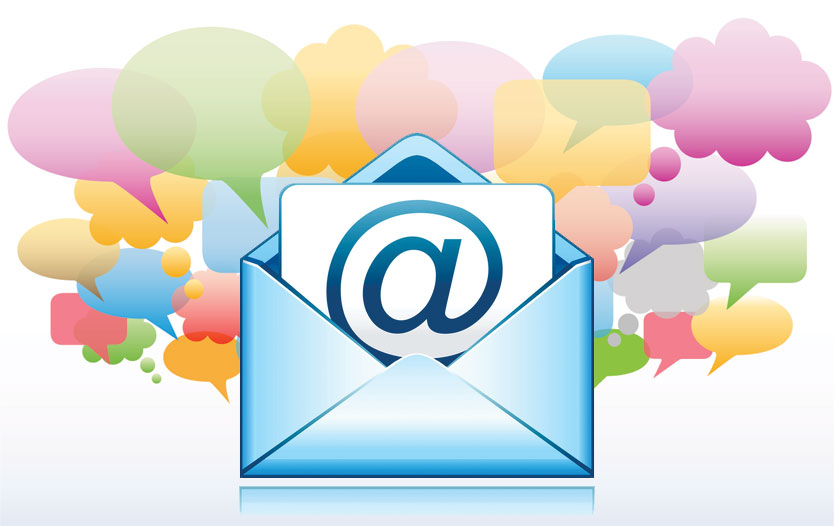- Category: February 2013 - Multichannel-Marketing
 The right multi-channel marketing strategy will always place the customer at the center while aiming at higher ROI. Integrating social media and e-mail marketing is just a part of a universal development towards cross channel marketing, which focuses on the individual customer, his or her interests and consumer habits, and the possible touch points through which this customer can be reached. Integrating all the channels enables the multi-channel dialogue with the customer everyone nowadays is looking for.
The right multi-channel marketing strategy will always place the customer at the center while aiming at higher ROI. Integrating social media and e-mail marketing is just a part of a universal development towards cross channel marketing, which focuses on the individual customer, his or her interests and consumer habits, and the possible touch points through which this customer can be reached. Integrating all the channels enables the multi-channel dialogue with the customer everyone nowadays is looking for.
It‘s not sufficient to interconnect the different channels, it is crucial to get the user to make use of the possibilities by offering incentives and offering content worth sharing. Integrating social with e-mail marketing, transactional mails and newsletters means increasing the reach tremendously - if your content is worth sharing or you offer incentives.
This year will bring a lot of multi-channel campaigns - encompassing not just e-mail and social but also mobile and even offline. The channel itself will lose some focus in favor of the customer and the dialogue and of course conversion rates.
The six following tips will help you to develop an integrated, customer centric strategy.
1. Focus on the individual customer
Forget about e-mail lists. Your potential and existing customers are real people with individual characters, special interests and individual needs. To be fully aware of this, and to adapt marketing efforts accordingly, is becoming more important than ever before in a world that is becoming more anonymous and automated by the minute. E-mail marketing is one piece of a complex puzzle of dialogues, all aiming at reaching marketing goals like conversion, lead nurturing, cross and up selling and a stronger customer engagement. It is important to see e-mail marketing as an important part of a bigger multi-channel strategy and not as an isolated channel in which potential and existing customers are segmented demographically. Marketers need to understand today‘s multi-channel customer and collect and analyze all the available information to allow targeting and segmentation based on individual interests, needs and behavior - and offer each customer exactly what they are looking for.
2. It‘s all about the right content
Content marketing means tailoring content specifically. It should vary based on potential and existing customer interests and needs, besides always offering relevant information at each customer touch point in the customer life cycle. The days of sending out generic and boring mass e-mails are long gone. Nowadays, content needs to be highly relevant, useful and really interesting for both editorial and informative as well as advertising mails. The more relevant the content, the higher the chances that the receiver is making use of the offers, and even sharing it with friends via social networks.
3. Monitor reactions across all channels
E-mail marketing is no one-way road. It must be seen as part of a dialogue with the customer. The growth of social media only makes the dialogue stronger. Opening and reading an e-mail generates an interaction - there might or might not be a click, which follows as a reaction or sharing via social. It is important to monitor all these reactions following a campaign across all channels and make use of the results for your marketing strategy. Make sure you are collecting data consistently from all systems, e.g. CRM, web analytics, social, online shop and from all customer touch points. Customer feedback and ratings should be made use of as well, as customers trust the judgment of friends and other consumers.
4. Being personal - despite automation
In a customer centric world, in which customers prefer to decide for themselves when they want to receive what information from which channel, automated and event-driven campaigns gain in importance. If you make proper use of all the „signals“ a customer is sending out through all channels, and integrate this information into the consumer profile, you can send out highly relevant and personalized mails to reach people in a much more effective manner - completely automated. Contact points on different channels can trigger an individual reaction to the customer‘s action. This starts at transactional messages after buying or special offers and rebates regarding products a consumer looked at but didn‘t buy - there are many possibilities for savvy marketers.
5. Welcome advertising!?
Latest trends show that today‘s customers forward many more advertising e-mails than people used to a few years ago. You might want to acknowledge this with special attention to these customers. Of course, as mentioned before, it comes down to the right content again - only relevant, interesting and useful content will be shared. And even if this might be a disillusion for some, special offers and rebates are the number one reason for consumers to follow a brand on social platforms or to opt-in for a newsletter. Don‘t disappoint you fans, followers and subscribers. In an interconnected world, happy customers will bring more customers via social.
6. Inbound Marketing
The days are gone where it can be recommended to buy an e-mail list and send out generic advertising mails. People want to decide themselves, and nobody wants to be inundated by advertising mails promoting products they are not interested in. Such practices are more harmful than useful. Studies have shown that one negative rating has a manifold stronger impact than a positive rating. In a social world, you shouldn‘t take that risk. Rather provide incentives for customers of the right target group to opt in, to grow your list and your conversion rate.
By MediaBUZZ


